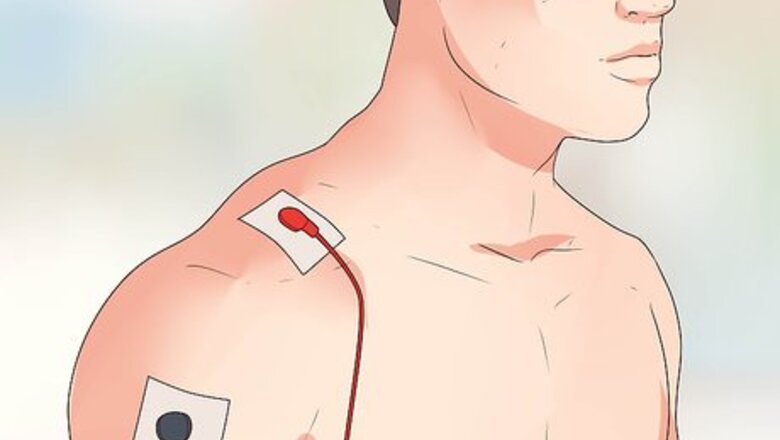
views
- Ensure that your TENS Unit will work properly by putting gel on the pads and placing them 1 inch (2.54 cm) apart.
- Start on a low setting and gradually raise the current. If it starts to hurt, stop right away.
- Don't place the pads in dangerous places like your temples, mouth, eyes, ears, or spinal column.
Placing Electrodes
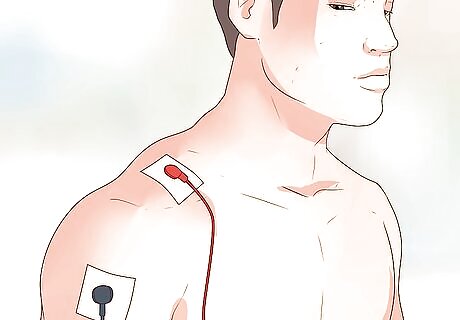
Place the electrodes at least 1 inch (2.54 cm) apart around painful areas. This will prevent you from having too much electricity delivered to too small an area. Turn the TENS device off while you are adjusting the electrode placement. You may arrange the electrodes in several ways, depending on what works best for you. Place the electrodes on either side of the area that hurts or over points that your physiotherapist shows you on a chart. If the electrodes are colored red and black, position the black electrodes farther from your trunk or torso, such as on your arms or legs, and the red electrodes closer to your torso. This will help prevent unpleasant impulses from going to your central nervous system. It will also stimulate muscle contractions. You may arrange the electrodes in lines, in X formations, or in squares, but they must be at least 1 inch (2.54 cm) or farther apart. To make an X, place one pair of matched negative and positive electrodes for one diagonal and another pair for the crossing angle.
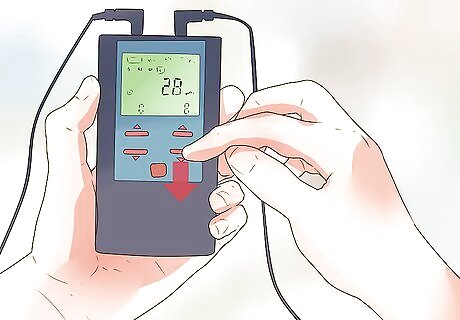
Start with the lowest setting. Make sure the pads are fully applied to your skin before turning the machine on to its lowest power. Then, increase them to an effective setting if needed. See a physiotherapist to get help adjusting the settings. This will reduce the likelihood of using a setting that is too high or too low. Ask about common massage points useful for relaxation on your body. Your physiotherapist will have experience and will be able to advise you as to what is best for your condition and what to avoid. To relieve your pain, find the pain points with your finger tips and apply electrode pads around there. The various settings feel different for each person, depending upon how sensitive you are and what your condition is. The body gets resistant to a unit that has only one pattern of electro “tapping.” Some have a random pattern.
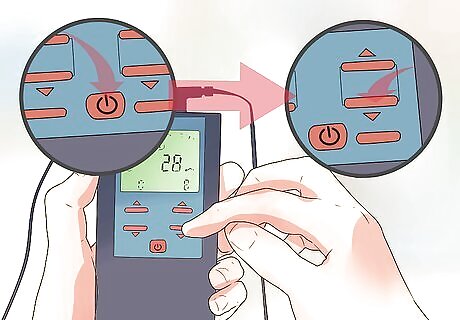
Adjust the amount of electricity slowly, gradually, and carefully. Start with the machine completely off, then turn it on so that the dial is at its lowest setting. Slowly raise the electrical current until you feel a pleasant tingling feeling. If it hurts, then the current is too high. More is not necessarily better. Turning it up too high will not increase the amount of pain relief. Your body may get used to the effect of a certain level of current after a while. If this happens to you, increase the current slightly.
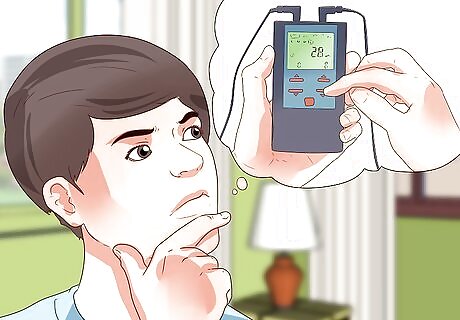
Remember the setting that works for you. Once you know how much electricity is beneficial for you and where to put the electrodes, keep using that setting. The proper setting will be different for everyone based on their preferences and condition. This doesn't necessarily mean starting at that setting, which might be painful. Start out on a low setting, then increase it slightly until you get to your preferred setting. Use TENS as long or as often as you want (up to 12 hours per session when the pads begin to dry out). If you use it for long periods of time while doing other things, you can clip the unit to your belt or keep it in your pocket. The amount of time that you're going to use the TENS unit will differ depending on the condition being treated, the chronicity of your health condition, and the way your body will respond. A physiotherapist will be able to provide the proper recommendations on the amount of time to use the TENS, in addition to the number of times that you can use the TENS. Be aware that using it too often will lead to your body getting used to the impulses. Eventually, the effects may diminish over time.
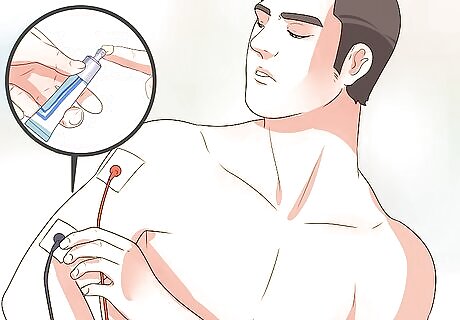
Make sure the pads have sufficient gel or water on them. Not only are you going to respond to a certain group of settings more than others, it's important to know that having enough gel or water on the pads can also result in different experiences. Having enough gel or water can help conduct the impulses better. If the pads are not sticking to your skin or the adhesive has dried out, wet the pads with cool water using your fingertips and allow them to air dry completely before use.
What Not to Do
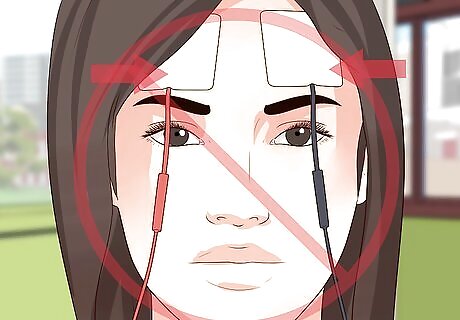
Do not place the electrodes on areas of the body which could harm you. You should not apply electricity to areas that are close to your heart or that are likely to be particularly sensitive. Keep them away from your: Temples Mouth Eyes/ears Front or side of your neck near the major arteries Spinal column (can be crossing from opposite sides of the spine, though) Left side of your chest, i.e. near your heart Front of your chest with one on your back Varicose veins Broken skin or a new scar that is still healing Areas that are numb Genitals
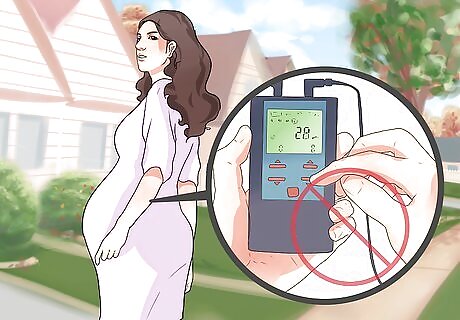
Do not use TENS at all anywhere on your body if you have a condition that makes it unsafe for you. Some health conditions make using TENS risky. If you have a pacemaker or another electrical device in your body, the electrical impulses could interfere with these devices or their signals, or cause a failure. If you have epilepsy, you may be more sensitive and it is better not to use TENS. If you have a disorder which affects the rhythm of your heart/heartbeat, your heart might be particularly sensitive to electrical impulses, and malfunction. If you are allergic to the electrode pads, you may be able to get hypoallergenic electrode pads. If you are pregnant or might be pregnant, do not use TENS without it being prescribed. The risks of using TENS during pregnancy aren't known, so do not use it without consulting your doctor. Some women find it helpful for pain relief during labor pains, but be sure to ask your doctor whether it is safe for you and your baby before using it. If you are unsure whether TENS is safe for you, consult your doctor.
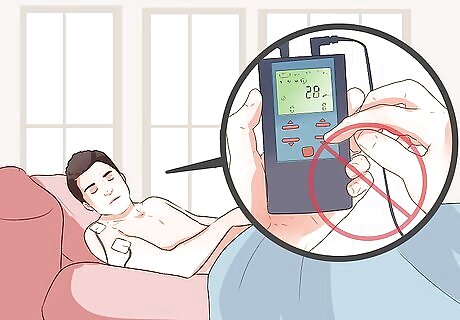
Do not use TENS while you are engaged in certain activities. These activities make using TENS more risky. If you are in the bath, shower, or swimming pool, the water will change how and where the electricity is conducted. Do not use TENS while you are sleeping. If you are driving a motor vehicle the sensations caused by TENS may be a distraction. If you are operating machinery, do not use TENS to avoid unexpected confrontations. The electrical impulses that TENS devices produce should not cause problems for airlines, but ask them before you use it during flight.
Realistic Expectations
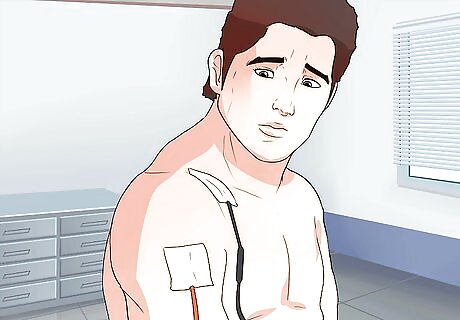
Reduce disappointment by knowing what to expect. TENS usually doesn't work immediately, so you may need to be patient. Some people find that it takes about 40 minutes of use before their pain subsides, while for others it works immediately. Most people only experience pain relief while using TENS. When you switch it off, your pain may return within an hour. If the TENS loses its effectiveness, it's important to make an appointment with your physiotherapist to learn how to change the settings. This can help in finding the right settings for your specific condition. The effects of TENS may not last long beyond the actual session itself, and it will not treat any underlying conditions that are causing your pain.
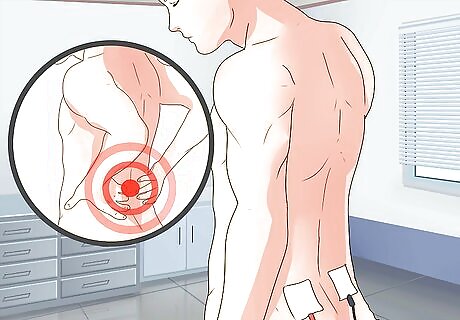
Learn about what conditions TENS is most likely to help. TENS is generally most beneficial for people experiencing pain and/or muscle spasms in certain areas of the body or for certain problems. Treatable areas and conditions include: Back Knees Neck Menstrual cramps Sports injuries Arthritis Pelvic pain resulting from endometriosis
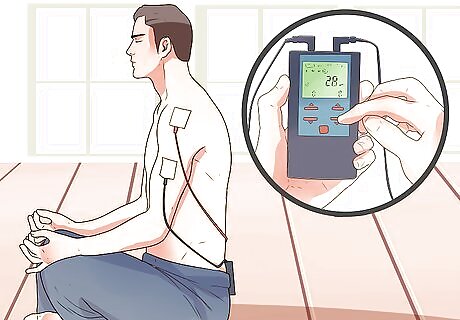
Maximize the benefits by pairing TENS with other pain management techniques. While people who can't take pain medications often find it very helpful, you are most likely to get relief if you use TENS and other methods of pain reduction. TENS can complement: Medication. This includes prescription strength or over-the-counter medications. Exercise. Ask your doctor what forms of exercise he or she recommends for your condition. Relaxation techniques. Depending upon what the cause of your pain is, you may be able to use TENS simultaneously with relaxation techniques like meditation, deep breathing, visualizing calming images, or yoga. The most effective way to use TENS therapy is by working with a physical therapist. Ideally, they'll use TENS to help alleviate your pain so you can do therapeutic exercises to improve your condition.


















Comments
0 comment